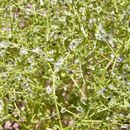en
names in breadcrumbs


USA: AL , AZ , AR , CA , CO , CT , DE , ID , IL , IN , IA , KS , KY , LA , MD , MA , MI , MN , MS , MO , MT , NE , NV , NJ , NM , NY , NC , ND , OH , OK , PA , SC , SD , TN , TX , UT , VA , WV , WI , WY (NPIN, 2007) Canada: ON (NPIN, 2007)
Flowers are purple or greenish. The plant has very small scattered sessile flowers, but they are not inconspicuous. The panicles (flower bearing branches) are open. Flowers are are bractless and perfect or some may be only female. The calyx bears strong keels on the concave lobes. Flowers have 5 stamens, and 3 styles or rarely 2 styles. (Peattie, 1930) Flowers may be tomentose (closely covered with downy hair), often becoming glabrous (hairless) and reddish. (FNA, 2004) Flowers may be yellow. (NPIN, 2007)
Fruit is broadly winged. (Peattie, 1930)
Leaves are simple. (NPIN, 2007) Leaves are lanceolate. They are coarsely, sharply, and irregularly serrate. The leaves are alternate sinuate-toothed and petioled (stemmed). (Peattie, 1930) Petiole may be absent. Leaf base is cuneate (triangular at the base and tapering to a point). At the leaf margin, teeth may be acute or mucronulate (tipped with points). (FNA, 2004)
Stems are much-branched. (Peattie, 1930)
Plant is 10-50 cm tall. (Peattie, 1930)
Flowers are 2-4.5 mm in diameter (including wing). (FNA, 2004)
Fruit Seeds are 1.5 mm in diameter. (FNA, 2004)
Stems 5-80 cm. (FNA, 2004)
Leaves The petiole is ca. 2-15 mm or absent. The leaf blade is 2-8 × 0.5-2 cm. (FNA, 2004)